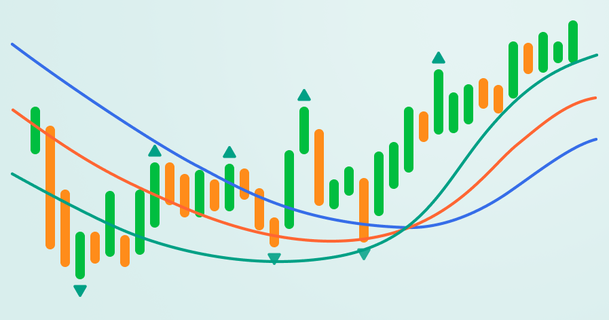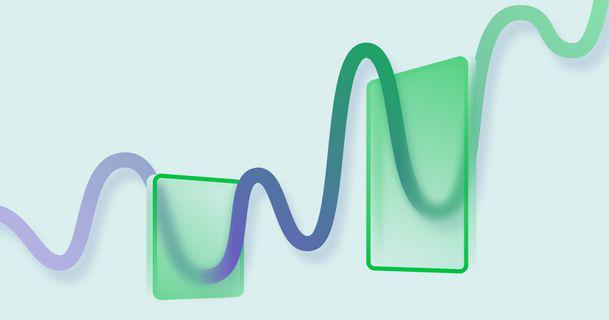
Bill Williams é o criador de alguns dos indicadores de mercado mais populares: Awesome Oscillator, Fractals, Alligator e Gator.

Não perca seu tempo. Acompanhe o impacto das NFP no dólar dos EUA!
Aviso de coleta de dados
Nós mantemos um registo dos seus dados para fazer funcionar este sítio web. Ao clicar no botão, concorda com a nossa Política de Privacidade.

Livro de Forex para principiantes
O seu grande guia no mundo do trading.
Confira a sua caixa de entrada!
Encontrará no nosso e-mail o Livro Básico de Forex. Basta tocar no botão para obtê-lo!
Alerta de risco: ᏟᖴᎠs são instrumentos complexos e vêm com um alto risco de perda rápida do dinheiro devido à alavancagem.
68,53% das contas de investidores de retalho perdem dinheiro ao negociar ᏟᖴᎠs com este provedor.
Deve considerar se entende como funcionam os ᏟᖴᎠs e se tem condições de assumir o alto risco de perder o seu dinheiro.
2022-08-26 • Atualizado
Informação não é consultoria em investimentos
A maioria dos traders — se não todos — quer dominar o mercado. Seria perfeito não ter que encarar um único prejuízo, decisão equivocada ou operação emotiva. Infelizmente, é impossível prever todos os movimentos do mercado e operar sem cometer erros. Tanto no trading quanto nos investimentos há fases de perdas, que podem ser chamadas de drawdowns. Este artigo vai te mostrar a definição e as explicações dos drawdowns. Pronto para estudar? Então vamos começar!
No que se refere ao trading de Forex, drawdown significa uma diferença entre o ponto máximo do saldo na sua conta de negociação e o ponto mínimo seguinte. Essa diferença no seu saldo reflete uma perda de capital provocada por perdas nas operações. Já nos investimentos, drawdown é a diferença entre o valor máximo e o valor mínimo da sua carteira.
Vamos supor que você decidiu investir em ações e criptomoedas. Você comprou Tesla, Moderna, Bitcoin e Ethereum, todos voláteis e todos sujeitos ao impacto de notícias e tensões geopolíticas. Suponhamos que você investiu US$ 10.000 e que cada ativo responde por 25% da sua carteira. Chega um momento em que você tem US$ 14.000 nessa carteira. Mais à frente, você descobre que a carteira agora vale apenas US$ 9.000. Logo, o seu drawdown vai ser de US$ 5.000 (US$ 14.000 - US$ 9.000). Vamos falar de cálculos depois.
É graças ao drawdown que você consegue avaliar o seu grau de diversificação e de apetite por riscos. Ele é uma parte fundamental da análise de estratégias de negociação: se o drawdown é alto demais e não te agrada, pode ser hora de pensar em melhorar a sua estratégia ou até trocá-la.
Deve-se observar uma ligeira diferença entre o drawdown no trading e o drawdown nos investimentos: no primeiro caso, trata-se de fazer uma gestão ativa das suas operações; no segundo caso, trata-se de manter o investimento a longo prazo. Os drawdowns no trading geralmente são bem maiores do que nos investimentos. É claro que tudo depende da sua estratégia de negociação, do seu apetite por riscos e da sua diversificação. Agora que já entendemos os dois tipos principais de drawdown, vamos falar sobre drawdown em ações.
A volatilidade total de uma ação é medida por seu desvio padrão (quanto que essa ação pode desviar de seu preço médio). Muitos investidores — especialmente aposentados que vão resgatar suas aplicações em previdência — se preocupam sobretudo com os drawdowns. Afinal, em tal situação a volatilidade pode arruinar o processo ou resultar em uma aposentadoria em meio a crises inesperadas e retomadas lentas. Por isso os investidores de longo prazo têm uma regra: dividir os investimentos de forma a administrar a carteira com maior sabedoria e eliminar riscos desnecessários. Pegue o número 100 e subtraia dele a sua idade. O resultado é a porcentagem de ativos de alto risco que você deve ter na carteira, em relação aos de baixo risco. Se, por exemplo, você tem 30 anos de idade, você deve ter 100 - 30 = 70% de ativos de risco e 100 - 70 = 30% de ativos de refúgio na sua carteira. Assim, quando estiver mais velho, estará menos exposto à volatilidade, já que aos 60 anos você terá somente 100 - 60 = 40% em ativos de risco.
O termo drawdown aparece no mundo do trading e também no mundo dos bancos, mas possui significados bem distintos em cada contexto. No contexto bancário, drawdown costuma significar o acesso gradual a parte ou ao todo de uma linha de crédito, podendo o acordo com o banco ser para fins pessoais ou para negócios. É um pouco complicado, então vamos simplificar.
Um exemplo de drawdown no âmbito das finanças pessoais é quando o proprietário de um carro deseja fazer melhorias no mesmo. Seria ineficiente pegar todo o dinheiro emprestado de uma só vez e gastar tudo em consertos ou acessórios. Em vez disso, a pessoa abre uma linha de crédito no banco e pega somente a fração que quiser. Assim a pessoa paga juros sobre a fração que pegou emprestada, não sobre o valor total. Ainda no contexto bancário, o processo de sacar dinheiro do banco também é chamado de drawdown.
Conforme citamos acima, para calcular o drawdown no trading é necessário acessar a sua carteira e subtrair a mínima da máxima. Vamos supor que você tem um valor inicial de US$ 100, mínima de US$ 70 e máxima de US$ 120. O drawdown é calculado a partir do pico atingido pela sua conta (US$ 120), não do seu capital inicial (US$ 100). Neste caso, o drawdown é de US$ 120 - US$ 70 = US$ 50. O drawdown corresponde a um período específico delimitado por duas datas definidas e pode ser expressado em dólares (como acima) ou em porcentagem.
Para calcular o drawdown em porcentagem, a fórmula é esta:
Drawdown (DD) (%) = ((Pmáx - Pmín) / Pmáx) * 100
Pmín = mínima histórica (fundo)
Pmáx = máxima histórica (pico)
O drawdown indica a desvalorização do capital na conta do trader ao medir o deslocamento de um pico para um ponto de mínimo. O ponto de mínimo não pode ser definido antes de um novo pico ser atingido. É importante enteder que drawdown não é prejuízo: drawdown é simplesmente o deslocamento feito da máxima até a mínima, ao passo que prejuízo é a descida do valor inicial ao valor atual.
Também é fundamental entender que o drawdown quase sempre acompanha você. Exemplo: você é um trader rentável, sua máxima é de US$ 150 e sua mínima é de US$ 110 (e você começou com apenas US$ 100, sendo portanto um ótimo resultado). Seu drawdown total é de US$ 150 - US$ 110 = US$ 40. Sua carteira poderia ter dado 50% de lucro, mas você acabou sofrendo um drawdown de 27% no intervalo considerado.
O drawdown representa um risco para o investidor na forma de quantidade de esforço ou de variação no preço necessária para superar esse drawdown e retornar ao pico inicial. Portanto, traders e investidores o calculam para evitar perdas irreversíveis.
Exemplo: um drawdown de 1% não é ruim. Basta 1,01% de ganho para se recuperar. Contudo, um drawdown de 50% vai exigir um ganho de 100% para que você recupere seu dinheiro, proporções bem mais difíceis — se não impossíveis — de alcançar. A porcentagem que você precisa recuperar é chamada de risco de drawdown. Para um drawdown de 20%, por exemplo, o risco é de 25%.
A gestão de riscos é essencial no trading e nos investimentos. É ela que te mantém no jogo. Vamos supor que você tem uma estratégia de negociação maravilhosa, com taxa de ganhos de 80%. Isso não quer dizer que você vai sempre ganhar 8 a cada 10 operações. Sequências de perdas são inevitáveis e devem ser consideradas.
A diversificação é o principal instrumento de redução de drawdown à disposição do trader. Não ponha todos os seus ovos no mesmo cesto. Você pode aguentar os mais fortes choques com menor prejuízo diversificando a sua carteira. Um exemplo é ter ouro compondo a sua carteira, o que vai ajudar contra a inflação e épocas de recessão. Adicione algumas ações para estimular a valorização, e não se esqueça do petróleo, pois à medida que a economia cresce, o petróleo valoriza por causa do aumento da demanda. Leia nosso artigo sobre esse assunto para operar sem perder.
Para quem é trader, o melhor recurso possível é uma gestão de riscos adequada. Tenha em mente que, mesmo com uma estratégia de negoicação rentável, a falta de gestão de riscos vai acabar com a sua conta. Um exemplo: não entre na operação com um lote grande demais. Tente manter a mesma ordem de grandeza em cada operação para saber exatamente quanto pode perder. Mais controle significa menos drawdowns.
Para resumir, aqui estão as três principais características dos drawdowns:

Bill Williams é o criador de alguns dos indicadores de mercado mais populares: Awesome Oscillator, Fractals, Alligator e Gator.

As estratégias de tendência são boas: podem gerar resultados consideravelmente bons em qualquer tempo gráfico e com qualquer ativo. A ideia principal da estratégia ADX é tentar apanhar o arranque da tendência.

As estratégias de contratendência são sempre as mais perigosas, porém as mais lucrativas. Temos o prazer de apresentar uma excelente estratégia de contratendência que funciona em qualquer mercado e com qualquer ativo.
Seu pedido foi aceito
Faremos contacto no intervalo de horário escolhido
O próximo pedido de contato para este número de telefone estará disponível em 00:30:00
Se tiver um problema urgente, por favor, contacte-nos via
Chat ao vivo
Erro interno. Por favor, tente novamente mais tarde